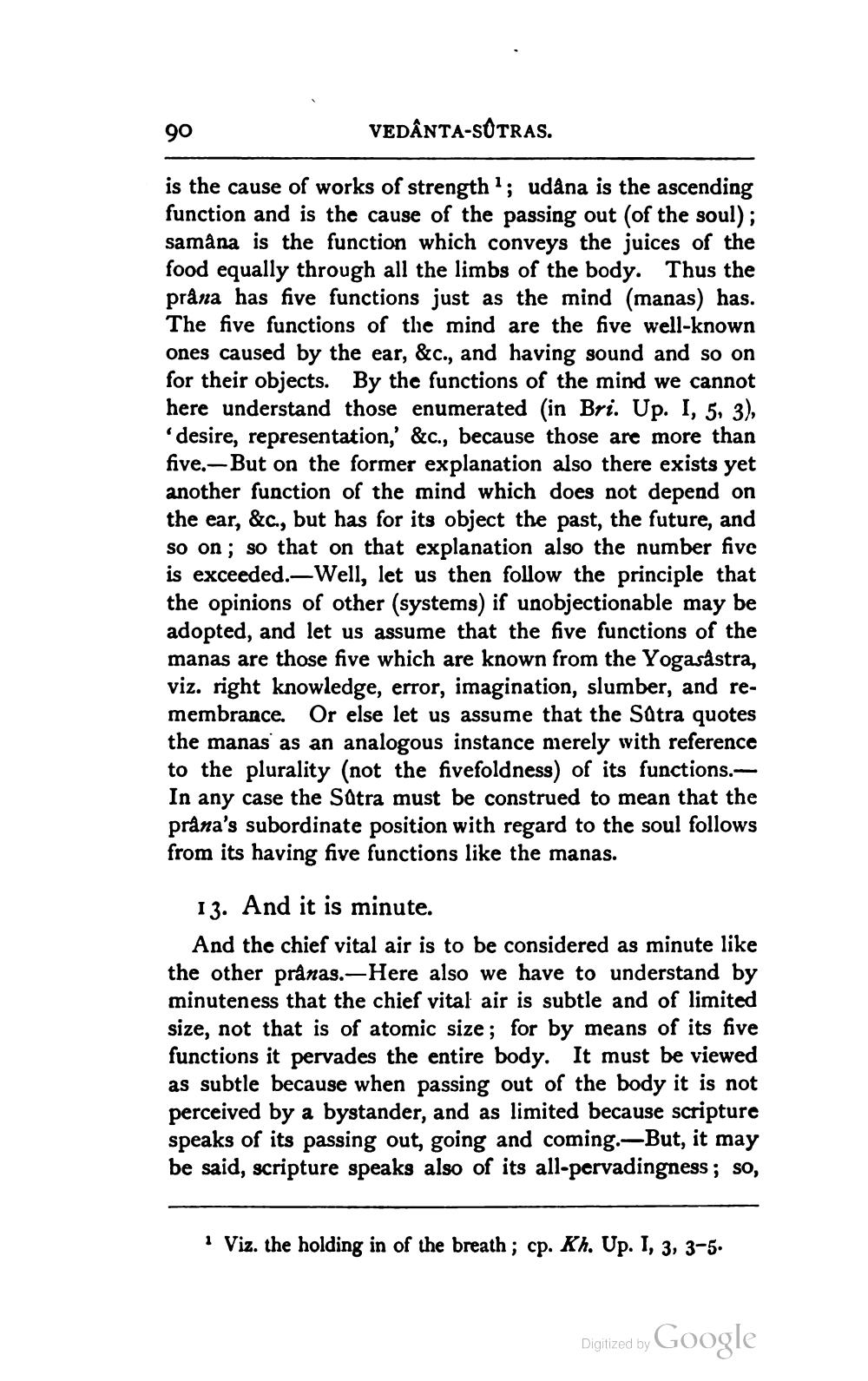________________
90
VEDÂNTA-SOTRAS.
is the cause of works of strength"; udana is the ascending function and is the cause of the passing out (of the soul); samana is the function which conveys the juices of the food equally through all the limbs of the body. Thus the prana has five functions just as the mind (manas) has. The five functions of the mind are the five well-known ones caused by the ear, &c., and having sound and so on for their objects. By the functions of the mind we cannot here understand those enumerated in Bri. Up. I, 5, 3), 'desire, representation,' &c., because those are more than five.—But on the former explanation also there exists yet another function of the mind which does not depend on the ear, &c, but has for its object the past, the future, and so on; so that on that explanation also the number five is exceeded.-Well, let us then follow the principle that the opinions of other (systems) if unobjectionable may be adopted, and let us assume that the five functions of the manas are those five which are known from the Yogasastra, viz. right knowledge, error, imagination, slumber, and remembrance. Or else let us assume that the Satra quotes the manas' as an analogous instance merely with reference to the plurality (not the fivefoldness) of its functions.-- In any case the Satra must be construed to mean that the
a's subordinate position with regard to the soul follows from its having five functions like the manas.
13. And it is minute.
And the chief vital air is to be considered as minute like the other pränas.-Here also we have to understand by minuteness that the chief vital air is subtle and of limited size, not that is of atomic size; for by means of its five functions it pervades the entire body. It must be viewed as subtle because when passing out of the body it is not perceived by a bystander, and as limited because scripture speaks of its passing out, going and coming.–But, it may be said, scripture speaks also of its all-pervadingness; so,
· Viz. the holding in of the breath; cp. Kh. Up. I, 3, 3-5.
Digitized by
Digilzed by Google




